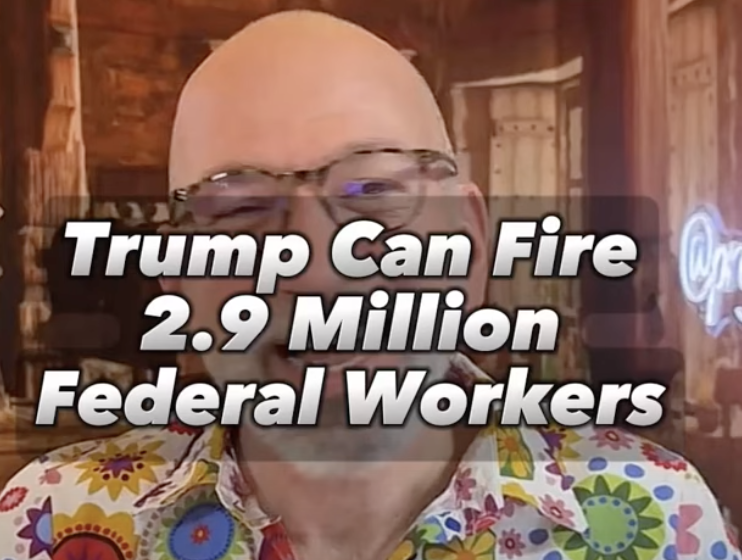This is a lightly edited transcript of the above video from Peter St Onge, Ph.D., a visiting fellow at The Heritage Foundation.
In a very satisfying headline, CNN is reporting a widespread “Feeling of Dread” among the millions-strong deep state—er, federal bureaucracy—that Donald Trump will fire them.
In case you’re curious why they used your tax dollars to try to influence the election.
CNN kicks off by reporting how the federal workforce is “on edge and bracing for the likelihood its ranks will be purged.”
We can only hope.
In particular, they’re terrified Trump will impose an executive order known as Schedule F, which would give him the power to hire and fire tens of thousands of bureaucrats who are in “policy-determining or policy-advocating positions.
Estimates range between tens of thousands up to 50,000—a solid start to draining the swamp, particularly given policy-advocating bureaucrats are the mother ship of deep state resistance.
CNN breathlessly calls it the biggest change since 1883, which is when the modern independent bureaucracy—the deep state—was born.
Now, mass firings won’t happen on Day One. For a couple of reasons. First, the Left—and the deep state—will deploy lawfare on a mass scale to shield the bureaucrats who feed them grant money to riot.
Lawfare means it’s got to be done carefully.
And, second, because Trump doesn’t necessarily have to fire all 50,000—the mere threat that he could fire them will concentrate minds among otherwise hostile bureaucrats clutching their gold-plated benefits and pensions.
For this we can look back to one of the greatest presidents in American history, Andrew Jackson.
By the way, in his first term, Trump kept a bust of Jackson right behind him in the Oval Office.
Jackson, like Trump, was a populist up against near-universal opposition among the elite and the federal workforce.
Of course, in 1830 that workforce was much smaller, with roughly 5,000 federal employees, since there was no income tax and no Federal Reserve.
Still, they were united in opposition to the populist Jackson. How did he win them over? Easy: he fired 1 out of 5. The rest fell in line.
Now, given Elon Musk wants to cut 1 in 3 dollars from the federal budget in his Department of Government Efficiency, we may be looking at even better numbers.
Meaning even their dreaded Schedule F is just the first sentence of the first chapter of a wholesale government retreat in the face of the people.
Now, going by Trump 1.0, the bureaucrats will fight with everything they’ve got, using a raft of civil service privileges imposed over a century.
But the Consitution is very clear—Article 2, Section 1 vests all executive power in one single person—the sitting president.
And the two main Supreme Court cases that interpreted the provision said the president can fire any political appointment (Myers, 1926). A 1935 case (Humphrey’s Executor) says he can fire anybody in a so-called executive agency, which is nearly 97% of federal workers.
Put them together, and the Constitution says whatever pretty laws Congress passes to shield bureaucrats from voters, Trump can fire roughly 2.9 million of them.
Beyond the opportunity to use former bureaucrats to pick fruit when illegals go home, a 97% headcount reduction should give Elon lots to work with on the way to cutting $2 trillion in spending.
So what’s next?
In many ways, Trump 1.0 got played by the deep state. But its sheer savagery these past four years has opened his eyes.
Millions of deep-state minions are right to feel a deep sense of dread as they dust off the resume and consider what useful things they might do in life.
